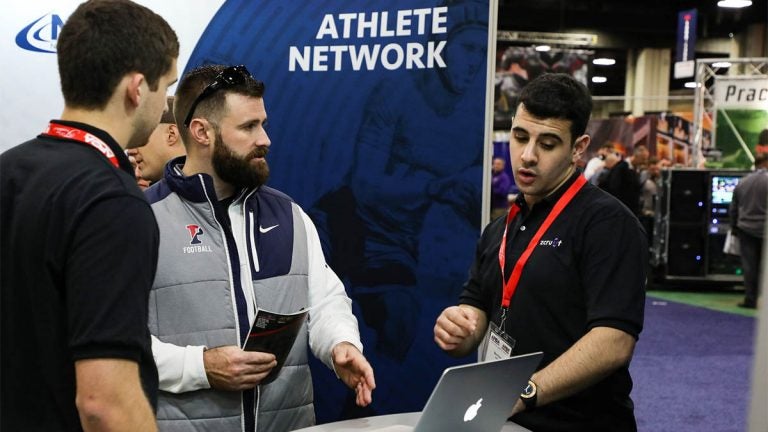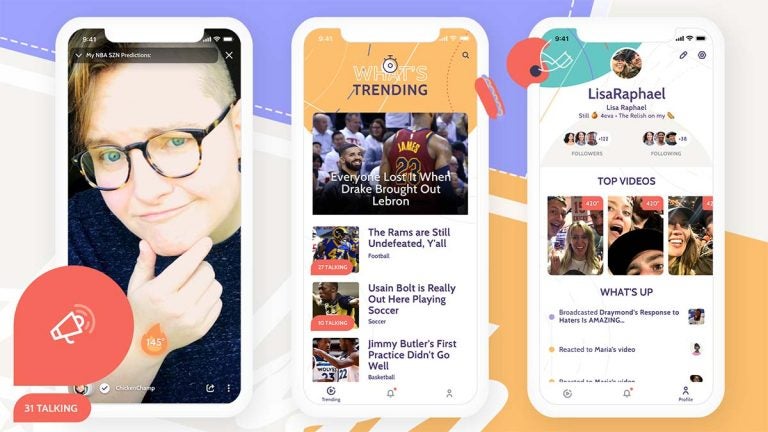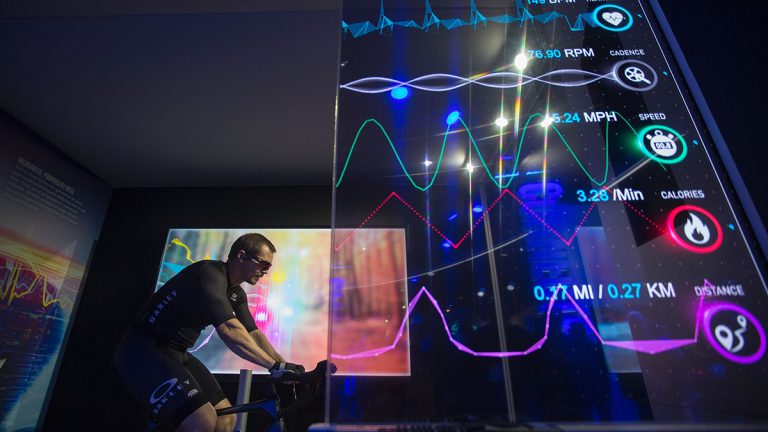Physical Therapy Sensor System Shows Promise for Sports Training
Why this matters
This system could be invaluable for athletes recovering from back injuries. Because this technology can help ensure that people perform exercises correctly, it might be useful for teaching athletes proper technique as well.
As a professor and biomedical engineer at Arizona State University’s School of Computing, Informatics, and Decision Systems Engineering, Jorge Caviedes conducts research in medical imaging and artificial intelligence for medical diagnosis. Caviedes is developing a wearable system of sensors to monitor physical therapy patients’ spines while they perform exercises.
Caviedes competed in several sports and developed an interest in sports medicine and exercise physiology, but his inspiration for the monitoring system came from closer to home.
When Caviedes learned his middle school-age daughter had scoliosis, he took her to a physical therapy appointment, where the physical therapist taught her exercises to improve her posture. As he watched, he wondered how his daughter would know she was doing the exercises correctly at home.
“Most people are simply taught and given brochures or videos. And they go home, and they are on their own,” Caviedes said. “You don't know compliance, and you don't know correctness.”
Caviedes’s concerns had merit. Kate Robbins is a physical therapist at the University of Michigan Hospital. She works in the emergency department but also has several years’ experience working in an outpatient setting.
“Part of our practice is to give home exercise programs, even when they're working with us. From visit one, they go home with exercises. And I'm pretty confident that the majority of people don't do their exercises because when I was in PT, I barely did,” Robbins said. “If you can't see them, all you can do is take their word, and they'll be like, ‘Oh, yeah, I'm doing it,’ and then you ask them to do it, and they clearly can't do it correctly.”
Caviedes started investigating whether there was a way to monitor spine exercises when patients are unsupervised. He found that advanced labs for professional sports had computer imaging systems with biofeedback, but there were no low-cost systems for the public. Caviedes began developing a system that could provide instantaneous feedback to patients to help them maintain the correct form. It is in the second generation of design, and he recently filed a patent application.
The system includes a light harness with flexible straps containing an array of sensors and smart glasses that shows users a 3D model of the spine while they are exercising. An app connects the system to a user’s phone, which gives the user real-time feedback about the exercises. The system eventually will be built into a lightweight garment that does not require a harness.
Because every person’s spine and spinal injuries are different, Caviedes designed the system to be customized to an individual’s spine and the specific exercises prescribed by a physical therapist. The physical therapist can do an initial assessment that captures the patient’s flexibility, spine curvature, and range of motion while wearing the harness.
During the assessment, the patient uses the system up to 20 times under the physical therapist’s supervision to ensure the exercise is correct. Afterward, the system can tell patients whether they are doing the exercise correctly.
“Physical therapy is a major cornerstone to non-operative treatment for patients with spinal disorders,” said Dr. Jay Turner, a spinal neurosurgeon at Barrow Neurological Institute in Phoenix, who has served as a clinical consultant on the development of Caviedes’s system. “It is used both in helping patients try to avoid surgery and also in patients recovering from procedures.”
But insurance authorizations and approvals can limit the number of physical therapy sessions a patient gets, creating barriers for people who cannot afford to pay for physical therapy out of pocket. Another barrier is patients not continuing their exercises when they have reached a milestone and no longer need frequent therapy, Turner said.
“The lack of a formal structure in the home environment can cause clinical regression. Therapists are needed to ensure patients are performing the exercises correctly to get the full benefit,” Turner said. “This technology has the potential to empower patients to do things properly on their own without having to travel, without having to up schedule appointments. It can greatly expand the current capabilities of physical therapy. The potential clinical benefit is enormous.”
Robbins has not seen Caviedes’s system, but she said a system that patients could use at home would be a helpful tool for physical therapists. For many chronic problems, if people know what exercises help them, they can manage and correct the problem, Robbins said.
“Anything that could help correct the mechanics to be able to engage the muscles more optimally would be ideal,” Robbins said. “I hand them a piece of paper, and, yes, it has videos. But if they had something that could feed back their mechanics to them and say, ‘You need to correct this,’ that would be amazing. That would be ideal, from top pro athletes all the way down to your weekend warrior athlete.”
If a system like Caviedes’s is accessible to the general population, it could have a significant impact “on teaching people how to move and protect their bodies,” Robbins said. “And if that actually comes to market and is used on a wide basis, I just think you'd have a healthier population.”
Robbins, a former elite rower, knows the importance of following through with physical therapy. Her personal experience with physical therapy inspired her to become a physical therapist.
In 2002, Robbins was the stroke seat in the U.S. women’s eight that won the gold medal at the world championships, the team’s first gold medal in that event in seven years. The stroke seat sets the rhythm and stroke rate for the rest of the crew, and many rowers consider it to be the glory seat in an eight-person boat. Stroking a world champion eight seemed to set a clear course toward the 2004 Olympics in Athens.
Eight months later, her dreams of competing in the Olympics were derailed.
In May 2003, Robbins was on a typical training row in Princeton when she felt a sudden pain in her back, and her left leg became weak. When she made it back to the boathouse, she had to roll out of the boat onto the dock. She immediately went to the doctor for an MRI and learned she had a rupture of her L5-S1 disc.
One week later, Robbins had surgery. Her chance for a repeat medal at the 2003 World Championships was finished, and the 2004 Olympics were in serious doubt. Facing a long road to recovery, Robbins did not know whether she would be able to compete again.
But she had the support and knowledge of Marc Nowak, a physical therapist for the national team who is now the director of athlete health for USRowing. Robbins is thankful for her surgeon, but she credits Nowak for saving her rowing career. Through months of hard work with Nowak, Robbins found her way back to the water and a spot on the 2004 Olympic team in the pair.
“Marc was the reason I decided to become a PT,” Robbins said. “Because he allowed me to continue to chase my dream, which I don't think I would have been able to do without his help.”
Nowak not only helped save her Olympic dream, but he also gave Robbins a quality of life that she still appreciates today. She was able to carry her twin boys throughout her pregnancy without serious back pain, and she can still row and run and lift patients in the hospital.
Caviedes’s initial research and development focuses on physical therapy for the spine, but his system has potential uses for physical therapy for other joints and for use in sports training. He said there are many possible applications.
“Service providers can save a lot of data, keep track of how effective the exercise is, design new exercise plans and workouts for different populations and different conditions,” Caviedes said. “When we're talking performance and you want to improve strength, flexibility, and range of motion for performance, you could definitely use the system by training it to measure correctness and performance improvement.”
“The system is scalable and is compatible with what is called heterogeneous sensor networks, not just the stretch sensors,” Caviedes said. “So you're monitoring more signals to create a measure of performance, and the biofeedback is more complex. In fact, it evolves from a simple beep that tells you you're doing it wrong to an actual virtual coach.”
Turner said there is a movement toward using wearable technology in health care, but that Caviedes’s system is novel in that it can help improve physical therapy technique. He draws parallels to strategies that are currently used in sports training.
“Video analytics are commonly used to enhance sports performance by using visual feedback to fine-tune technique. Wearable technology takes these concepts a step further and allows quantifiable metrics about body position to improve technique,” Turner said. “Having visual feedback of where the body is in space will allow patients to more correctly execute their physical therapy exercises and ultimately allow them to more independently address their health condition.”
Robbins had one experience with a biofeedback monitoring system at the U.S. Olympic & Paralympic Training Center in Colorado Springs. The system allowed her to analyze her rowing stroke and make corrections to her technique in real-time. Robbins saw mistakes with her technique and found the real-time feedback helpful, but she is not sure if the experience had a lasting effect.
“I think it was too limited because we only did it once. It would have been nice to see monthly follow-ups or habits post-injury to see how the injury has impacted your stroke,” Robbins said. “Without the follow-through, I have no idea if I actually corrected it.”
For now, Caviedes is focused on physical therapy and hopes his system can help physical therapists and patients like his daughter. But in the future, athletes and coaches could use versions of his system as a low-cost alternative to expensive sports labs.
Jeff Burtka is a freelance writer based in metro Detroit. You can read more of his work here.





